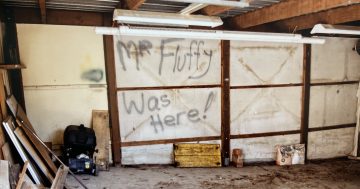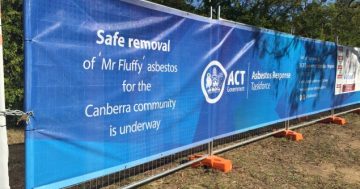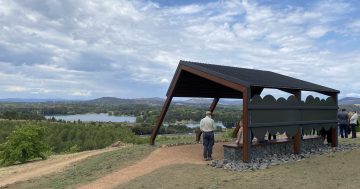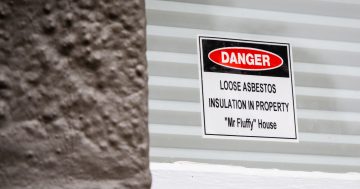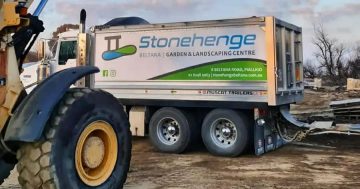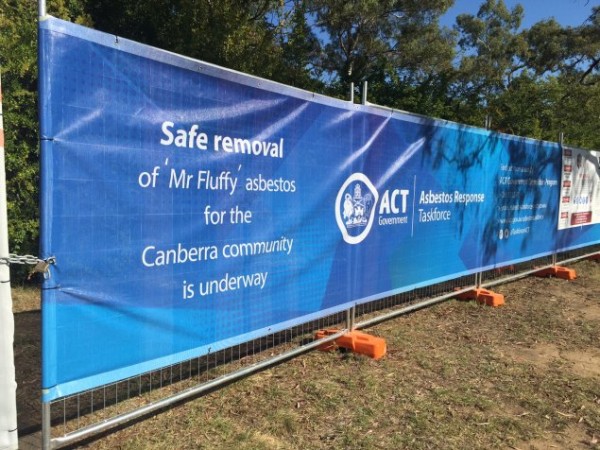
Curtin home is the 1024th home to be placed on the register. File photo.
The discovery of a new Mr Fluffy house with bagged loose-fill asbestos hidden under normal roof insulation has highlighted the importance of both home owners and builders sticking to Work, Health and Safety laws requiring asbestos to be identified and removed before any work is started.
In what is believed to be the first case of its kind, a tradesperson contracted for renovation found the asbestos and contacted an assessor.
The Asbestos Response Taskforce was made aware of the finding on 5 July and added the home to the publicly available Mr Fluffy register on 11 July and it is expected that it will be demolished as part of the Mr Fluffy remediation scheme.
Ged Keane from Keane Environmental, which provides asbestos services, says the biggest problem is that many people do not know their obligations under law when it comes to asbestos.
Mr Keane, who also teaches asbestos awareness and the Working safely with asbestos course for Master Builders, says any home built before 1985 requires an asbestos assessment before any work is done.
He says the employer has to determine what asbestos is there and remove it or arrange for it to be removed prior to refurbishment or demolition.
“So when they get a refurbishment contractor at a residential house, they should be engaging an assessor, they should be asking questions – when was it built – to determine if there is any asbestos so they protect their employees,” Mr Keane says.
But in many instances, that doesn’t happen. If people follow the law, there shouldn’t be any worries about finding any more Mr Fluffy houses, Mr Keane said.
He also believes that many tradespeople don’t like putting the asbestos question to the home owner for fear that they don’t get the work.
Mr Keane warned home owners that there is no safe exposure limit, with recent research showing a lot of DIY home renovators who have no occupational exposure contracting mesothelioma.
The Environment, Planning and Sustainable Development Directorate said a tradesperson had identified suspicious material in the roof cavity of the house after removing a tile, and had immediately contacted an asbestos assessor.
Deputy Director-General, Sustainability and the Built Environment, Geoffrey Rutledge told the ABC that it appeared that someone had bought a few bags of loose fill asbestos and laid it out themselves in half the roof cavity to insulate the home, instead of it being pumped in to the roof space.
Mr Rutledge said testing had shown the asbestos was not in the living area, but every time a house shifts asbestos can move into cavities and down to the sub-floor.
“We didn’t undertake invasive testing but we certainly sealed up the home,” he said.
Demolition was the only answer to the situation, and the Taskforce was working with the family and expected an early resolution.
The owners are eligible for the ACT Government’s Loose Fill Asbestos Insulation Scheme, which includes the buyback and demolition of affected properties, and have until June 30 next year to take part. The valuation will be based on the date their property was added to the Affected Residential Premises Register.
They had requested that their privacy be respected while they consider their options.
Mr Rutledge ruled out any further audit of properties, saying the focus would be on community and industry awareness.
But he did expect that as the city grew and more homes were renovated there would be more of these kinds of cases.
EPSDD said the actions taken by the tradesperson indicated the effectiveness of the mandatory asbestos awareness training in the ACT in managing unexpected finds of asbestos.
“In 2014, the ACT became the first jurisdiction to mandate asbestos awareness training for all workers who might come into contact with asbestos. Additionally, as at 1 July 2019, ACT workers who are likely to encounter materials containing asbestos are also required to complete training on how to handle asbestos safely,” the Directorate said.
The Curtin home is the first Mr Fluffy case since 2016, and is the 41st affected property in the suburb. There are four still standing.
It brings the number of affected homes in the ACT to 1024, with 953 properties demolished through the Government program, 26 properties demolished privately and 974 removed from the Affected Residential Premises Register.
The property is the second to be identified since the Scheme was announced on 28 October 2014. It was not part of any earlier clean-up program.
The Directorate said any person concerned that their house might contain loose fill asbestos should engage a licensed asbestos assessor. A list of assessors can be found at www.accesscanberra.act.gov.au/app/services/licence/#/asbestos-assessor












